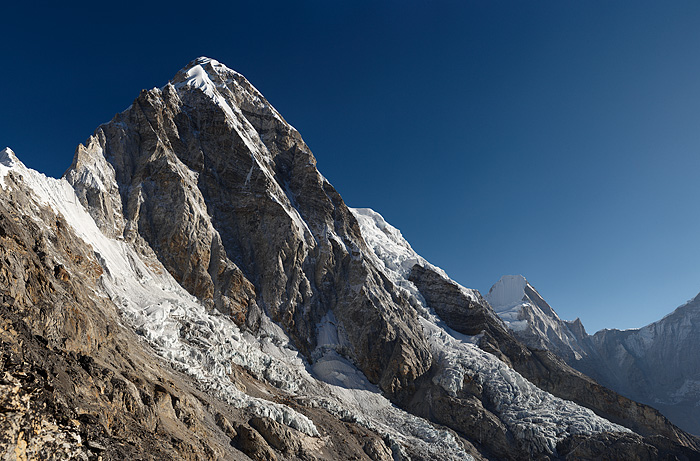I have been stitching a lot for years now, using both PTgui and Autopano Pro (1.4 being probably the best package out there at the moment).
I have found the auto stitching abilities of Autopano Pro with low contrast images containing areas with little marked features to be vastly superior to PTgui's. On the other hand I prefer PTgui's interface for control points etc...
You might be interesting in knowing that as of PTgui Pro 7.8 they have implemented their own version of the infuse algo (HDR based on pixel level brightness evaluation in 16 bit space). This works pretty well per my first tests.
One recent sample made up of 36 Nikon D3 images (resulting image is 200 megap pixel). This was shot a few weeks ago in the Himalayas, the mountan pictures is Pumori at 7150 m. This was shot with a RRS pano head.

Thanks to its speed of operation and wonderfully stable shutter, I have found the D3 to be much easier to use for stitching purpose than the Mamiya ZD I also use.
- Very high quality moderate ISO (400 or even 800 ISO) is a huge plus in various shooting conditions where the ZD's low ISO is a real pain since it induces longer exposures,
- The ability to check images sharpness on screen at pixel level in a fraction of a second is a blessing when using longer lenses in windy situations,
- Deep RAW buffer also help with panos containing more than 10 images.
Cheers,
Bernard